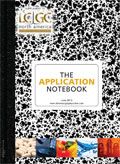Separation of Proteins Using a TSKgel Protein C4-300 Reversed Phase Column
Tosoh Bioscience LLC
Atis Chakrabarti, PhD and Justin Steve, Tosoh Bioscience LLC
While reversed phase chromatography (RPC) is often used for the analysis of small molecular weight compounds, there are also various standard applications for the separation of biomolecules, such as proteins. Conventional reversed phase HPLC packing materials with 8–14 nm pore sizes are not generally suitable for the analysis of large intact proteins because the analytes are not able to access the surface area within these pores. In answer to the need for an RPC column optimized for protein analysis, Tosoh Bioscience developed a wide pore 30 nm, silica-based butyl (C4) column, the TSKgel Protein C4-300.
The packing of the TSKgel Protein C4-300 column, prepared by polymeric binding of butyl (C4) alkyl groups, reduces the protein adsorption on the stationary phase compared to a C18 stationary phase. The stationary phase is fully endcapped with trimethylsilyl (TMS) groups to prevent interaction with free silanol groups. This incurs higher stability of the phase and reduction of peak tailing.
This application note discusses the analysis of large metalloproteins and monoclonal antibodies using a TSKgel Protein C4-300 column.
Experimental Conditions

Results and Discussion
Figure 1 displays the analysis of a large metalloprotein and corresponding apoprotein on the TSKgel Protein C4-300 column. Each figure is an overlay of three consecutive injections, demonstrating the excellent intraday reproducibility that was obtained from injection to injection.

Figure 1: Analysis of large metalloproteins using a TSKgel Protein C4-300 column.
Figure 2 demonstrates the use of a TSKgel Protein C4-300 column for the analysis of two monoclonal antibodies (mAbs). Both mAbs were reduced with dithiothreitol (DTT), disassociated into heavy and light chains, and then analyzed using the TSKgel Protein C4-300 column. The small difference in hydrophobicity between the mAb-1 and mAb-2 sample was detected. In addition, a hydrophilic variant of the H chain was observed in mAb-1.

Figure 2: Analysis of monoclonal antibodies (reduced form) using a TSKgel Protein C4-300 column.
Conclusions
The TSKgel Protein C4-300 column is ideal for the analysis of proteins of various sizes. Excellent reproducibility from injection to injection, as well as detection of hydrophobic variances, was obtained using these reversed phase columns. The large pore size of 30 nm, along with the 3 μm particle size, optimized ligand density, and alkyl length, make the TSKgel Protein C4-300 column an excellent choice for highly efficient, reversed phase separations of large proteins.
Tosoh Bioscience and TSKgel are registered trademarks of Tosoh Corporation.
Tosoh Bioscience LLC
3604 Horizon Drive, Suite 100, King of Prussia, PA 19406
tel. (484) 805-1219, fax (610) 272-3028
Website: www.tosohbioscience.com

SEC-MALS of Antibody Therapeutics—A Robust Method for In-Depth Sample Characterization
June 1st 2022Monoclonal antibodies (mAbs) are effective therapeutics for cancers, auto-immune diseases, viral infections, and other diseases. Recent developments in antibody therapeutics aim to add more specific binding regions (bi- and multi-specificity) to increase their effectiveness and/or to downsize the molecule to the specific binding regions (for example, scFv or Fab fragment) to achieve better penetration of the tissue. As the molecule gets more complex, the possible high and low molecular weight (H/LMW) impurities become more complex, too. In order to accurately analyze the various species, more advanced detection than ultraviolet (UV) is required to characterize a mAb sample.

.png&w=3840&q=75)

.png&w=3840&q=75)



.png&w=3840&q=75)



.png&w=3840&q=75)














